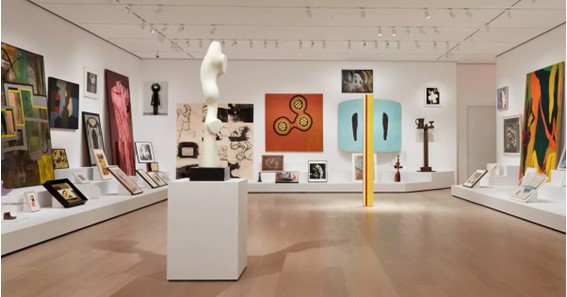The Museum of Modern Art (MoMA) in New York City is a world-renowned institution that houses some of the most significant and influential works of modern and contemporary art. In addition to its impressive art collection, MoMA is also celebrated for its unique architectural design. This article will delve into the architecture of the Museum of Modern Art, exploring its history, design, and significance.
Introduction
The Museum of Modern Art (MoMA) is one of the most iconic museums in the world, attracting millions of visitors each year to its collection of modern and contemporary art. But MoMA’s significance extends beyond its art collection; the museum’s architecture is also a significant aspect of its identity. This article will explore the history and design of MoMA’s architecture, as well as its significance in the world of art and architecture.
The History of MoMA
MoMA was founded in 1929 by Abby Aldrich Rockefeller, Lillie P. Bliss, and Mary Quinn Sullivan, who sought to create a museum dedicated to modern and contemporary art. The museum’s first location was a modest space in the Heckscher Building on Fifth Avenue in Midtown Manhattan. Get exciting offers on Museum of modern art NYC tickets
As MoMA’s collection grew, the museum moved to several different locations around New York City, including a townhouse on East 54th Street and a building on West 53rd Street. However, these locations proved to be too small for the museum’s rapidly expanding collection, and a new building was commissioned.
The Architecture of MoMA – The First Building
The first building designed specifically for MoMA was completed in 1939 and was designed by the architect Edward Durell Stone. The building was a rectangular structure with a glass curtain wall façade and was considered to be one of the first examples of the International Style of architecture in the United States.
The Yoshio Taniguchi Building
In 1997, MoMA commissioned the Japanese architect Yoshio Taniguchi to design a new building that would accommodate the museum’s growing collection and provide a better visitor experience. Taniguchi’s design was a stark departure from the previous building’s aesthetic, with a minimalist and monolithic design.
The new building features a series of interconnected galleries and open spaces that allow visitors to move freely through the museum. The use of natural materials such as marble and glass creates a feeling of lightness and transparency, allowing visitors to feel more connected to the artworks on display.
The Renovation of MoMA
In 2019, MoMA underwent a major renovation, which was again designed by Yoshio Taniguchi. The renovation aimed to address some of the issues that had arisen since the original Taniguchi building opened in 2004, such as overcrowding and the need for more exhibition space.
The renovated museum features several new galleries, including a dedicated space for performance art, as well as expanded public spaces and a new restaurant. The museum’s façade has also been updated, with a new glass curtain wall that allows for better natural light and views of the surrounding city.
